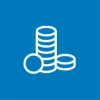Gold is one of the few assets that has consistently kept its value for many centuries, which in turn is due to a strong ongoing demand for this metal. Another reason for holding wealth in gold is that its value is relatively independent from the stock market and money market.
Here, moneyland.ch lists the most important tips for anyone interested in buying gold in Switzerland.
1. Only buy gold from reputable dealers
Unfortunately, gold bars and coins with counterfeit inscriptions, and even fake gold bullion, are widespread. Because the risk of being taken for a ride is high, you should stick to buying gold from reputable, established dealers, such as licensed Swiss banks.
2. Compare price tags
Different dealers charge different prices for the same amount of gold. It is not uncommon for the cheapest offer for an ounce of gold to cost as much as 60 francs less than the most expensive offer. The cheapest offer for a one-kilogram bar can cost up to 2500 francs less than the most expensive offer. Comparing prices before you buy is worth it.
3. Store physical gold securely
Before you buy physical gold, you should make sure you have adequate storage. From a safety perspective, it can be worth renting a safe deposit box at a bank or at a non-bank secure storage facility. Another option is to obtain a safe. Some gold dealers offer their own secure storage facilities as an optional paid service.
4. Buy gold in bulk
The rule of thumb when it comes to prices for gold bullion is: The per-gram price of gold is lower for large gold bars than it is for smaller bars and coins. The reason is that the minting costs are higher for many smaller pieces than for a single large one.
For example, on April 11, 2024, the Basler Kantonalbank charged 84 francs for a one-gram gold bar. On the same date, the same bank charged 69,175 for a one-kilo gold bar. So buying 1000 one-gram bars would cost 84,000 francs – nearly 15,000 francs more per kilogram, compared to buying a one-kilo bar from the same dealer.
5. Coins are for collectors
Coins typically have high markups over the gold price due to higher minting costs and a possible collectible value. Gold bars, on the other hand, do not have any value above the current gold price. Unless you collect coins, you should stick to standard, non-special-edition gold bars with the lowest possible markup over the gold spot price.
6. Pay attention to certification
Gold bars from Swiss gold refineries must, by law, be examined and stamped by the federal government’s Precious Metal Control office. The stamp includes the refinery’s name or abbreviated name and the word “Melter” or “Assayer” (if the refinery is licensed as both, then both words are included in the stamp). Stamps from Swiss refineries typically use the French “Fondeur” and “Essayeur” or the English translation.
The LBMA Good Delivery Standard from the London Bullion Market Association (LBMA) certification shows that gold from a certain refinery meets the requirements for trading on London commodities exchanges. That is important because London exchanges play an important role in the gold market.
Foreign gold bars may only legally be sold in Switzerland if they are produced by an LBMA-certified gold refinery. The five major Swiss gold refineries (Argor-Heraeus, Metalor Technologies, MKS Pamp, PX Precinox, and Valcambi) all have LMBA certification.
7. Check the fineness of gold before you buy
Not all gold bars and coins contain the same proportions of gold. The purest gold, to date, has a fineness rating of 999.999 out of 1000 parts. It is followed by 999.99 (second-highest rating), 999.9 (third-highest rating), and 999 (fourth-highest rating, also known as 24 karats). The minimum fineness required for LBMA certification is 995 out of 1000 parts.
Gold bars from Swiss gold refineries typically have a 999.9 fineness rating. Gold coins, on the other hand, often have a lower gold content. For example, the fineness of the popular Swiss gold Vreneli coins is only 900 out of 1000 parts. What that means is that only 900 grams out of every one kilogram is actually gold, while the remaining 100 grams is a cheaper metal (copper, in the case of the Vreneli).
8. Understand special labels
Some Swiss gold dealers offer gold bars with special labels. Examples include Fairtrade gold, green gold, and traceable gold. These labels indicate that the gold has been mined in a socially and/or environmentally responsible way. As with ESG ratings for stocks, standards and methods vary between the rating agencies behind these labels.
Special labels can be interesting for investors who want to invest based on ESG criteria. But the price markups over the spot gold price are typically much higher than those of standard gold bars.
9. Consider alternatives to buying physical gold
If your only reason for wanting to buy gold is to profit from gains in the price of gold, then you should take a look at alternative gold investment solutions as well. These include precious metal accounts, exchange-traded funds (ETFs), and certificates that track the gold price.
10. Understand how gold is taxed in Switzerland
Unlike other precious metals like palladium, platinum, and silver, gold bullion is not subject to Swiss value-added tax (VAT). Gold bars are exempt from VAT as long as they have a fineness of 995 or more. Gold coins must be minted by a government mint to be VAT-exempt.
Like all other assets, gold bullion must be declared in your tax returns. You can find the official Swiss franc value of Gold for Swiss tax purposes on the website of the Federal Tax Administration (FTA).
More on this topic:
How to invest in gold
These factors affect the gold price
Compare Swiss online trading platforms now
Swiss precious metal accounts explained


 Deal of the Day
Deal of the Day 






